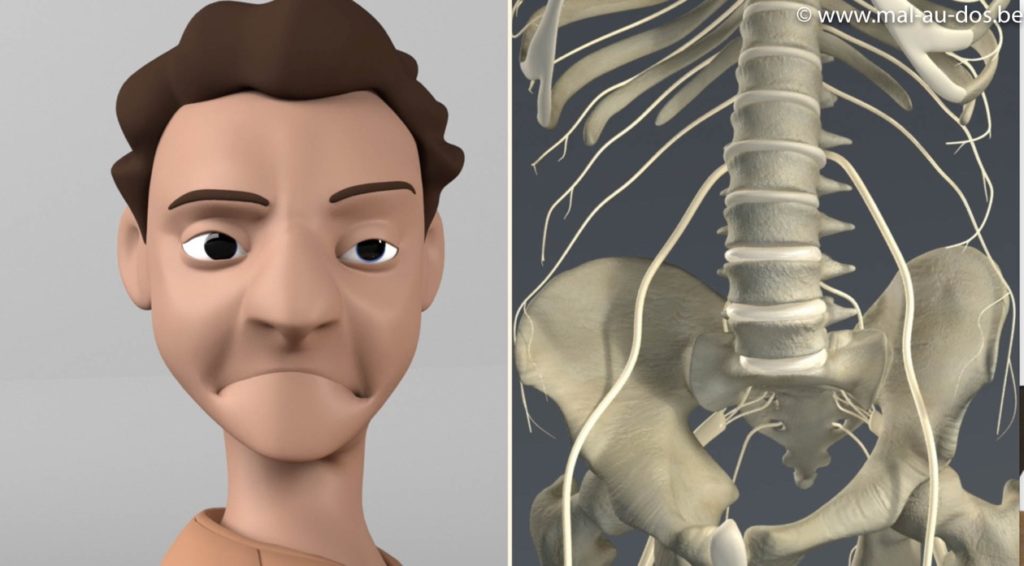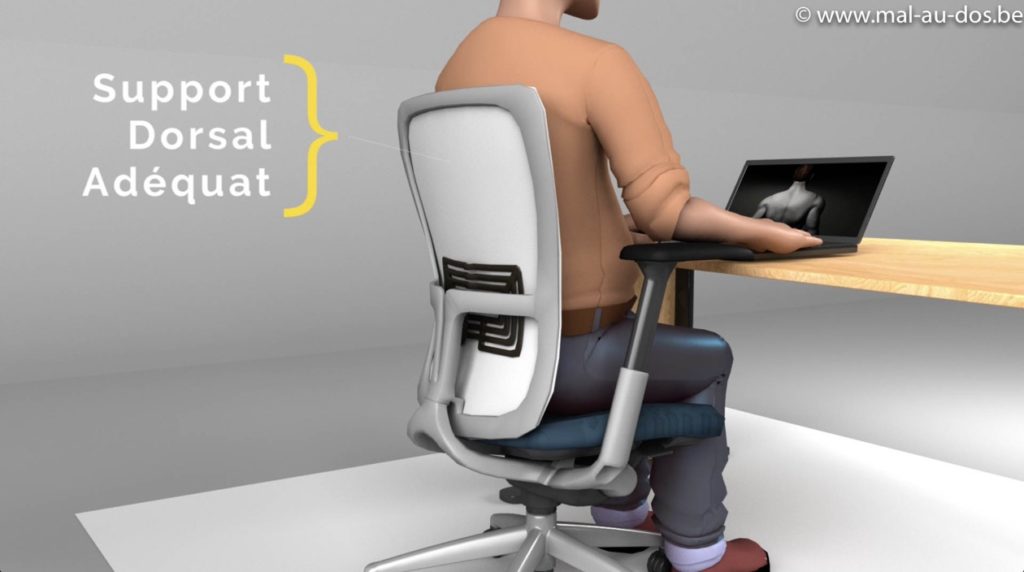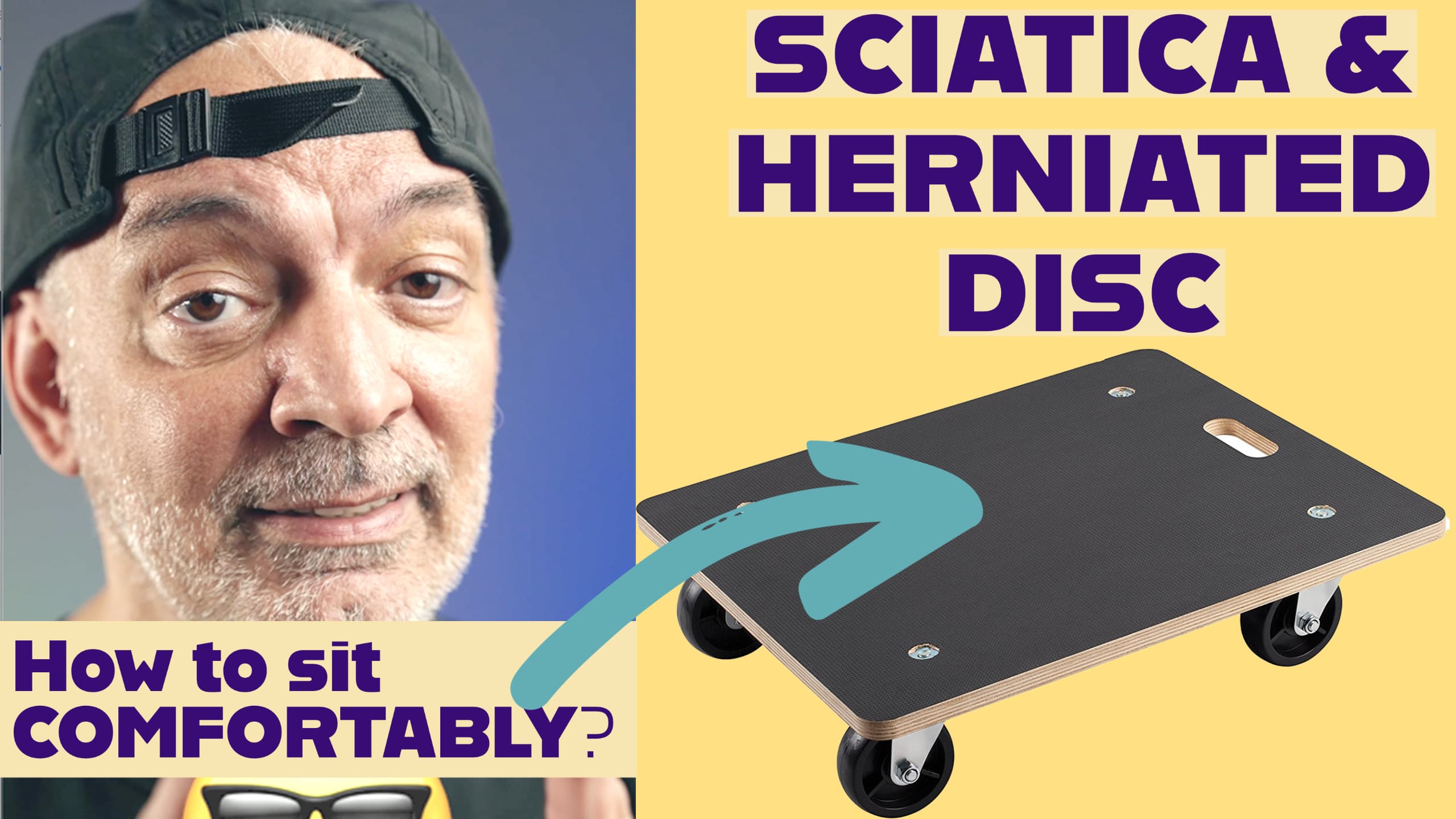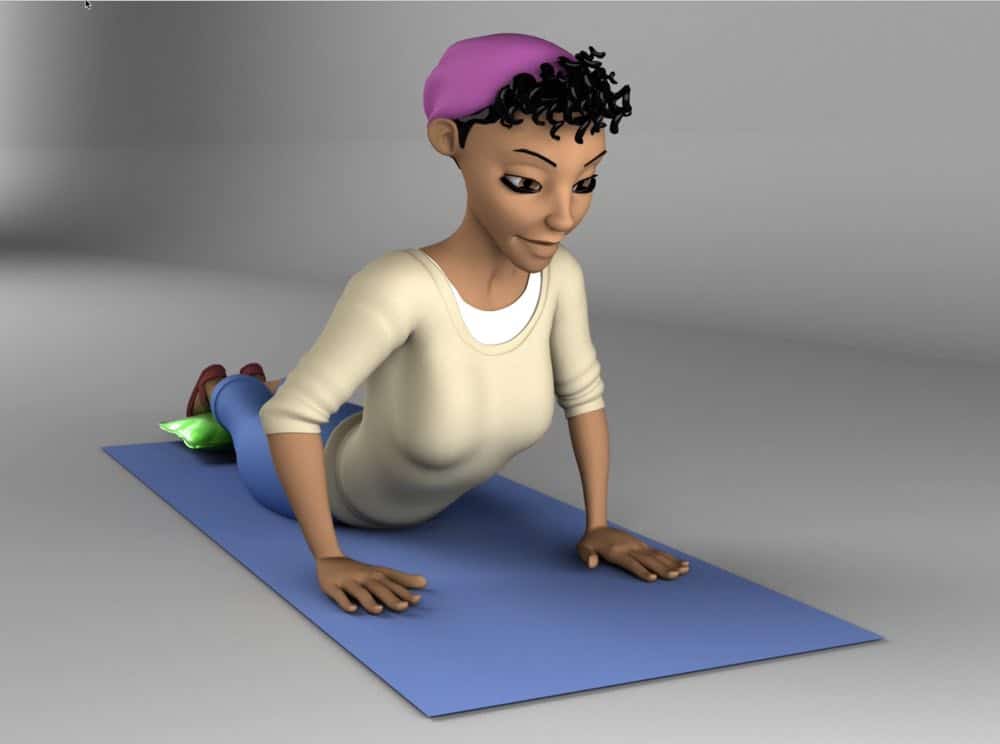Do you have pain in your lower back from sitting at a desk from sciatica, herniated disc, or Degenerative Disc Disease?
Sitting with herniated disc: ergonomics don’t always work.
If you have back pain when you’re sitting at a desk and you’re looking at Google or Youtube how to sit down when your back hurts, or how to back pain relief when sitting at a desk, you’ll find the classic ergonomic rules, which usually tell us that:
- You need to stand up straight, to preserve the natural alignment of the cervical spine and the spine
- You must sit straight in the back of the chair, with your back firmly against the backrest.
- And, the screen must be at eye level: no tilting of the head allowed, the computer screen must be right in front of you
For Mark, this is a problem.
Not because he does not have a keyboard anymore or because his laptop is not going to stay in the air indefinitely, but just because Mark has a l5-s1 herniated disc, coupled with degenerative disc disease, and his lower back hurts. And even more when sitting at a desk for an extended period of time…
The standard ergonomic rules are only prevention. With L5-S1 herniated disc, they just don’t work 😰
The worst position for herniated disc
Sitting is definitely THE worst position for herniated disc. Sitting for too long and to often will hurt your back sooner or later.
And yet, that’s what many of us do, all day long, all life long: just sit at a desk, sit on a couch…
Sciatica & herniated disc l5-S1 can’t sit
Being unable to sit if you have L5-S1 herniated disc is only normal. L5-S1 is the last (lowest) vertebral disc on the spine: the disc that carries the most stress, most weight, most pressure, especially when sitting.

Best way to sit with l5-s1 herniated disc & sciatica:
- A good office chair, with armrests adjustable in height and depth, which must be adjusted
- to provide good support for the forearms.
- A backrest support large enough to be in contact with the upper back. It is important that the upper back is in contact with the backrest.
- (You’ll see why in a minute …)
The office chair shall be equipped with a rear tilting mechanism whose resistance is adjustable.
The tilt control must be adjusted in order to offer maximum resistance to the back when the latter tilts backward.
And what’s needed left is a simple furniture moving tray or wooden dolly. It can be found in all DIY stores, or you can build one yourself.

Even the best desk chair, with the right wheels, rock-solid, which can support good loads and rolls smoothly: it’s still a very cheap solution to help relieve back pain when sitting at your desk.
And that, my friends, changes everything.
And why does it change everything?
Because first, it allows the feet and legs to move without even paying attention, and second, it allows for sitting at his desk while keeping the legs stretched.
And that, for those of you who suffer from sciatica or herniated disc: you may have already found that it is more comfortable.

It’s not just about comfort!
Pay attention to what happens when you sit and stretch your legs: the pelvis naturally changes direction to follow the movement of the legs.
As a consequence, the upper body weight that is usually supported by the lower back when sitting down in a conventional manner, is now mostly supported by the muscles in the back of the thighs, but also through the upper back, thanks to the tilting mechanism of the chair.
And the upper body is not far or more than half of the total weight of the body, which puts pressure on the lower back when sitting classically.
So if you can’t sit at your desk by the regular rules of ergonomics because you have sciatica or herniated disc, it makes sense to find other parts of the body to support the weight & pressure of the upper body.
And that is exactly what this method for sitting does.
The lower back is not crushed anymore, it stops putting pressure right where it hurts, and Mark can sit longer, and more comfortably.
Maybe you already have a wooden dolly like that hanging in your basement or attic.Try it out, you’ll see, it’s quite useful for back pain relief when sitting.
For Mark, this works!
Ps: You could argue that for the office, this solution is not the most practical one: use a classic footrest. It’s less efficient since you can not move your legs but you can still sit with your legs straight, and this is what helps for lower back pain relief when sitting down at your desk.
How to sit with Herniated Disc & Sciatica Image Gallery













